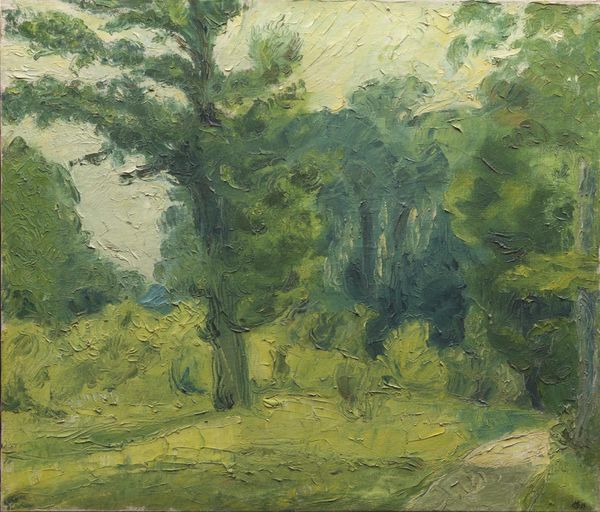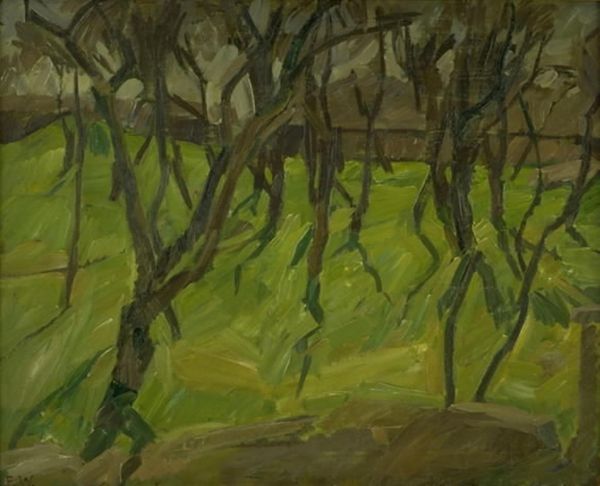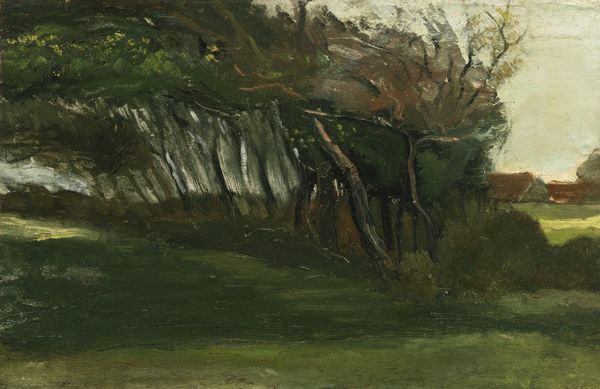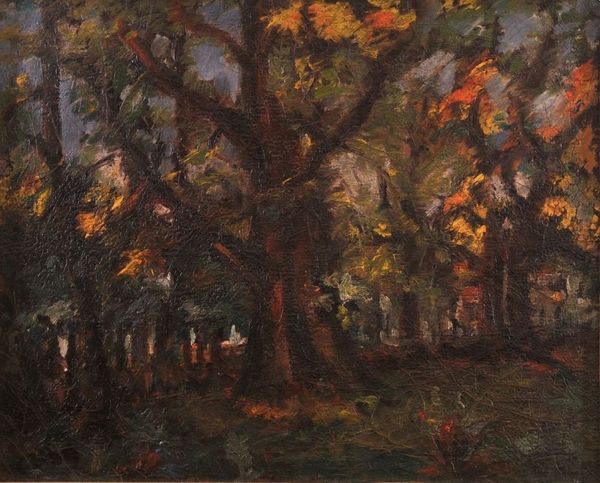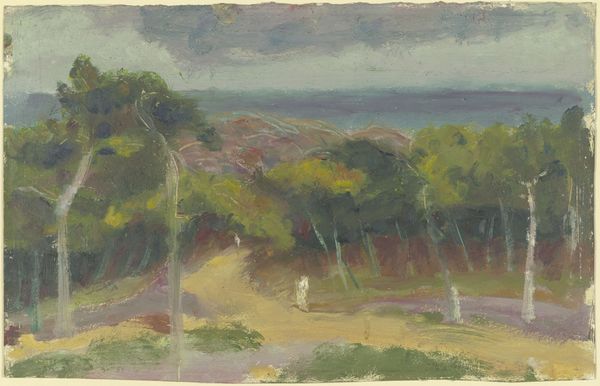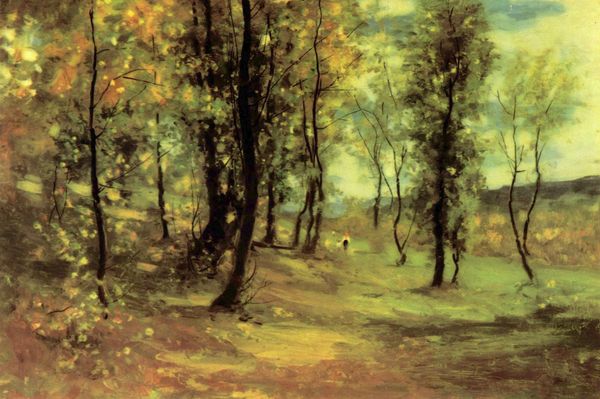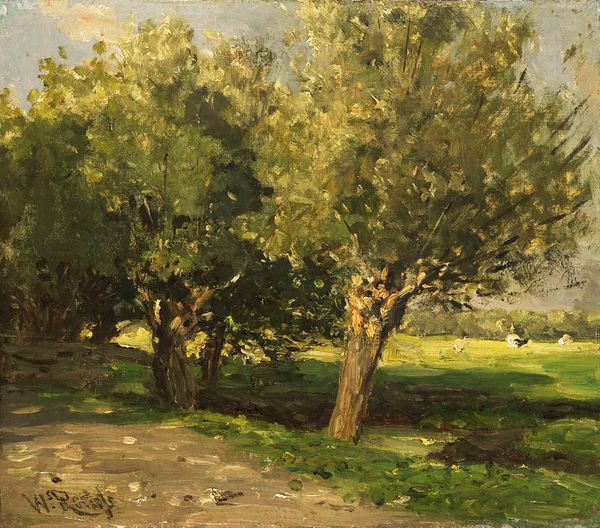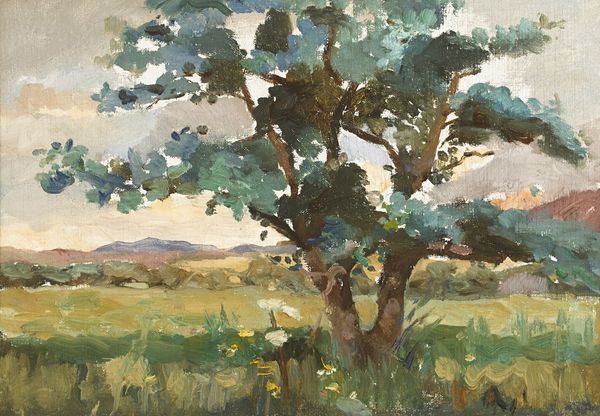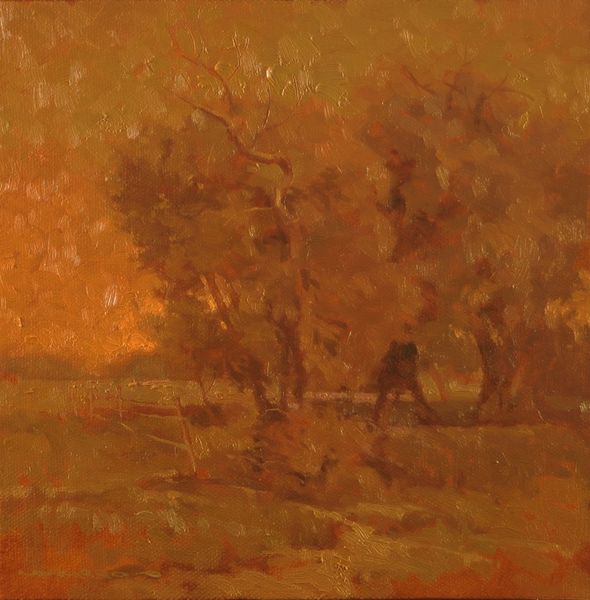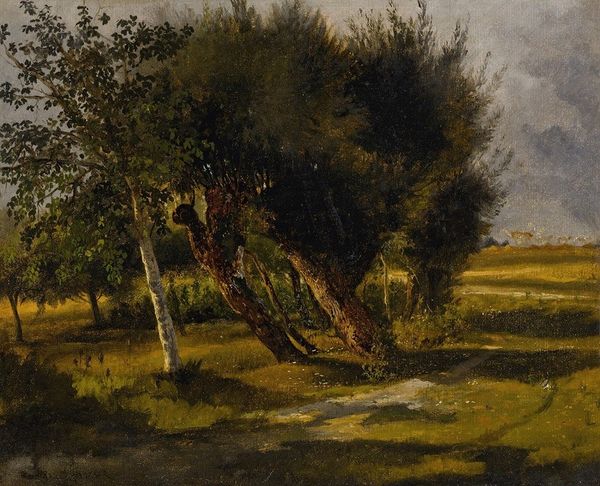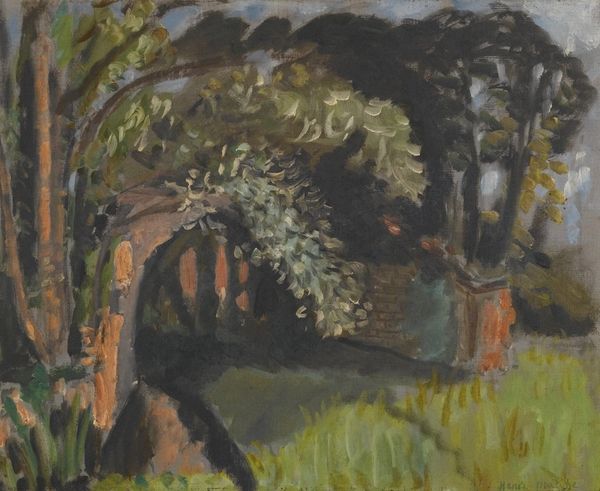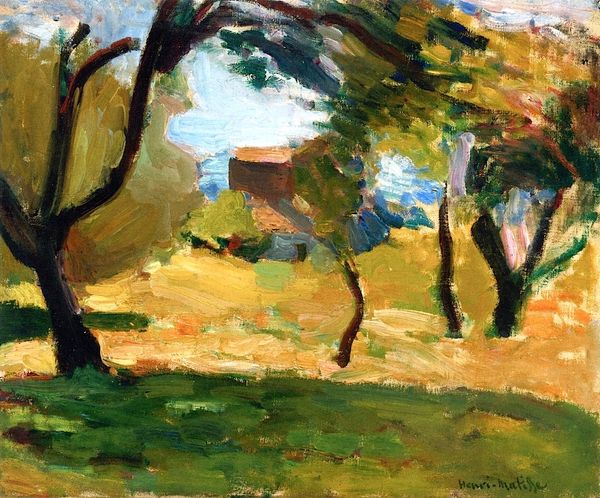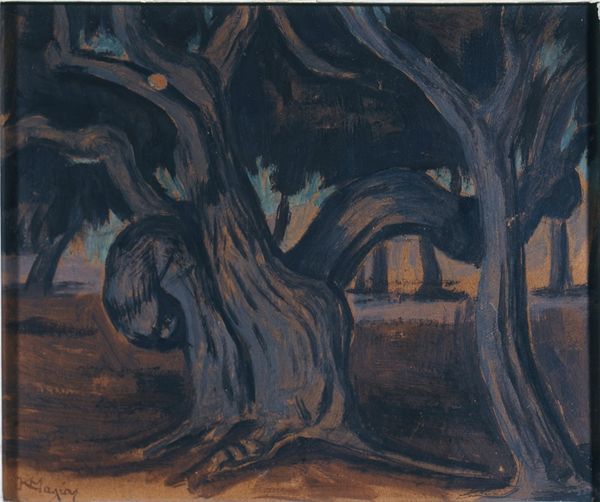
painting, plein-air, oil-paint
#
portrait
#
painting
#
impressionism
#
plein-air
#
oil-paint
#
landscape
#
impressionist landscape
#
figuration
#
oil painting
#
italian-renaissance
#
italy
#
realism
Dimensions: 15 x 25 cm
Copyright: Public domain
Curator: This is Silvestro Lega's "Woman among the olive trees," painted in 1888. Lega, a key figure of the Macchiaioli movement, captures a scene with a figure in a grove of olive trees, rendered en plein air with oil on panel. Editor: My immediate response is to the muted palette; there's a tranquility here that emanates from the restricted tonal range. How do you perceive its structural aspects? Curator: Note the emphasis on texture—Lega's visible brushstrokes build up layers of pigment, capturing the effect of dappled sunlight filtering through the olive branches. The woman's figure anchors the composition, positioned according to clear orthogonal lines established by the tree trunks. The subdued palette is characteristic of Lega, reinforcing that delicate impression of serenity. Editor: That impasto contributes to the overall material presence, certainly. Beyond the aesthetic appreciation, however, what about the labor inherent in producing this piece? We often overlook the preparation of supports, grinding pigments, and the act of physically carrying materials outdoors for an en plein air study like this one. These paintings are embodiments of the labor involved. Curator: Certainly. And consider how the landscape here isn't merely picturesque. It's a representation of land shaped by labor, evoking the symbiosis between people and the environment through repeated motifs, the Olive groves which also implies the olive oil production industry that flourishes in Italy. The interplay of light and shadow structures that relationship. Editor: Absolutely, it forces a connection between our consumption habits and that working process. How olive oil arrives on our table has a history etched within this painting. Curator: Fascinating points! Examining the olive grove, one might reflect on its iconic role as a landscape representing peace and antiquity. Editor: Indeed, by examining the production context alongside the composition, the image gains deeper meaning. Curator: Agreed. Reflecting upon the relationship between form, facture, and cultural symbolism makes the art relevant across time. Editor: For me, viewing this piece emphasizes how art objects carry embodied labor.
Comments
No comments
Be the first to comment and join the conversation on the ultimate creative platform.
